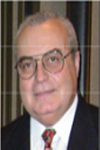
Osama Sam Ibhrahim
Consultant Biotechnology/ Food safety Bio Innovation U.S.A
Title: Expression of shiga-like toxin fused to vascular endothelial growth factor in Escherichia .coli for target angiogenesis
Biography
Biography: Osama Sam Ibhrahim
Abstract
Angiogenesis is a highly controlled process of growing new blood vessels. Under normal circumstances angiogenesis occurs only during embryonic development, wound healing and development of the corpus luteum. However, in a large number of pathologies, such as solid tumor growth, various eye diseases and chronic inflammation states, angiogenesis is a crucial component of the disease process. Therefore, inhibitors of angiogenesis are being investigated as potential therapeutics for these pathologies. During angiogenesis endothelial cells of existing blood vessels undergo a complex process of reshaping, migration, growth, and organizing into new vessels. Vascular endothelial growth factor (VEGF) is a central mediator of this process and acts via receptors whose expression is restricted almost exclusively to endothelial cells. Because of its selectivity, VEGF represents a unique vehicle for delivery of inhibitors of angiogenesis to endothelial cells. Among potential inhibitors of angiogenesis, the shiga-like toxin-1 (SLT-I) produced by E.coli O157:H7 has the advantage that endothelial cells appear to be particularly sensitive to its action. Combining an SLT-I toxin with VEGF as a delivery vehicle would serve as a highly selective and active inhibitor of angiogenesis. Plasmids encoding the fusion proteins VEGF121 /A1 containing the catalytically active fragment of the SLT-I A subunit and VEGF121/A containing the full length A subunit of SLT-I were constructed in pET-29a and pET-32a systems. Escherichia coli BL21 (DE3) pLysS bacteria were transformed with the plasmid constructs and expressed fusion proteins were recovered in inclusion bodies upon induction with isopropyl –B-D-thiogalactopyranoside (IPTG). Both purified fusion proteins inhibited the translation of luciferase mRNA as a reporter gene in vitro translation system, indicating that both fusion proteins retain the N-glycosidase activity of SLT-I. However, only VEGF121/A1 fusion proteins displayed the ability to induce auto-phosphorylation of the VEGF receptor KDR/FLK-1.. In a biological assay VEGF121/A1 fusion proteins displayed a strong, selective growth inhibition of cultured cells expressing KDR/FLK-1 receptors. In summary, these results indicate that VEGF/SLT fusion proteins are promising therapeutic agents that can be developed into powerful and selective inhibitors of angiogenesis.
